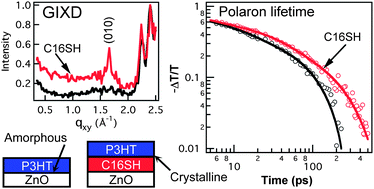Impact of interfacial polymer morphology on photoexcitation dynamics and device performance in P3HT/ZnO heterojunctions†
Abstract
To understand the critical factor(s) that influence short-circuit current in poly(3-hexylthiophene) (P3HT)/ZnO solar cells, we investigate the morphology of the interfacial


 Please wait while we load your content...
Please wait while we load your content...